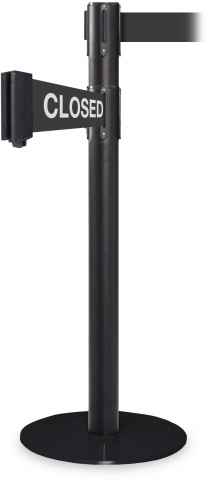
Table of Contents
The Role of Barriers and Barricades in Crowd Management
The dangers inherent in large crowds are now widely recognized. Crowd surge has resulted in death and injury at events as wide ranging as sporting events, concerts, religious festivals and retail sales. Managing large crowds safely requires a comprehensive management approach that falls outside the scope of this article however we will focus on one key area of crowd management and that is the use of barriers for access control.
Control the Crowd Before It Forms
In the case of managing crowds at venues such as theaters, stadiums or retail stores during peak sales periods a key danger point is the entrance. If uncontrolled crowds form prior to the venue opening there is a real danger of a crowd surge at opening time. As people join the back of the crowd they are unable to see what is happening at the front, and as the venue opening time approaches there is a tendency for the crowd to press forward in anticipation.
When the doors are opened the crowd can surge forward causing a dangerous crush at the front. A critical element of avoiding this situation is to organize the people as they arrive so that you have control over their movement before a crowd forms.
By organizing arriving customers into a queue (waiting line) you provide the individual with the security of knowing they will gain entry in the order of their arrival and this reduces the urge to push forward. The second key benefit of a queue is that it provides a control point from where you can manage the rate of access so that entrances do not become overcrowded forming a choke point.
Controlling Crowd Inflow

In this diagram the hold area is the queue. Access into the queue and from the queue to the venue can be easily controlled. Input to the queue should be controlled to ensure its capacity is not exceeded. Controlling the release of customers from the queue into the venue can be done by numbers e.g. 50 at a time, by timing e.g. 50 every 10 minutes or visually when the queue exit is in line of site of the venue entrance.
Barriers for Access Control
The controlled nature of a queue means that customers typically only require guidance where to stand and retracting belt barriers also known as stanchions can be used. This form of barrier has the advantage being relatively light weight and compact while still providing a long barrier length. Products such as Queue Solutions QueuePro are ideal for forming large capacity queue corrals as they have the longest belts available.
The longer the belt the fewer stanchions needed saving in purchase cost and setup time. To manage input and release control Queue Solutions specialized QueuePro Lane Closure post is an ideal tool. This stanchion has a second belt set at 90° to the main belt which is designed for use as a gate and allows the queue lane to be opened and closed.

The Role of Barricades
Barricades, also called ‘bike rack’ barricades, are typically 8’ long and weigh over 40lbs This heavy duty barrier is typically used to keep crowds back, either in front of a restricted area or lining a route to keep it clear of pedestrians. When used for access control barricades are often set up to close off entry points that are not in use and funnel customers towards the queue entrance. This helps to start the sorting process as customers approach the queue and keeps the entrance to the queue orderly.
Conclusion
Barriers are an important tool for the managing of large crowds. By helping to sort, guide and manage arriving customers barriers set up in a well-designed queue system stop crowds forming at entrances. Controlling waiting crowds and releasing them in a measured way eliminates the risk of crowd surge when the entrances are opened.

